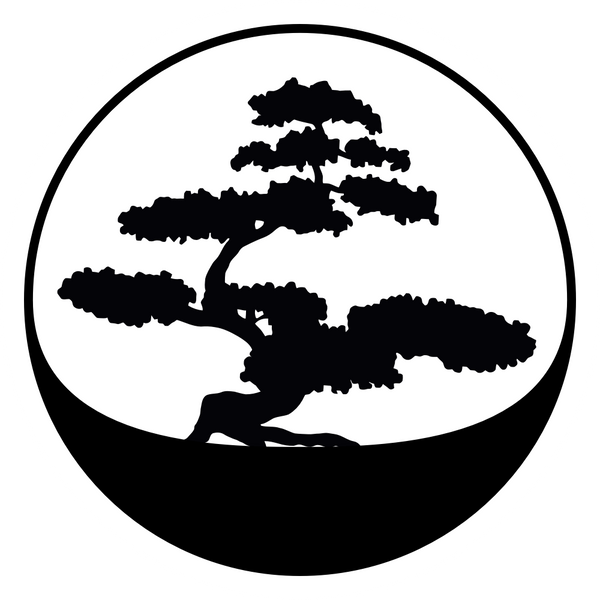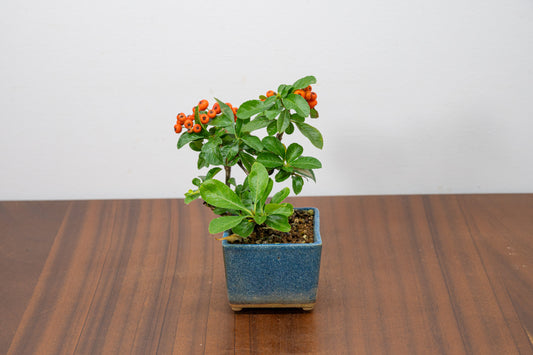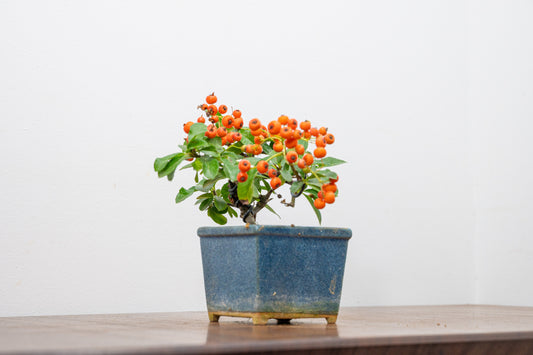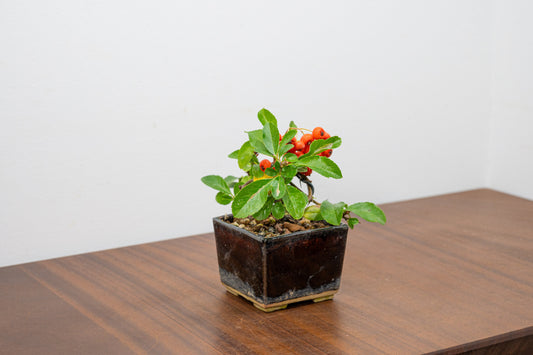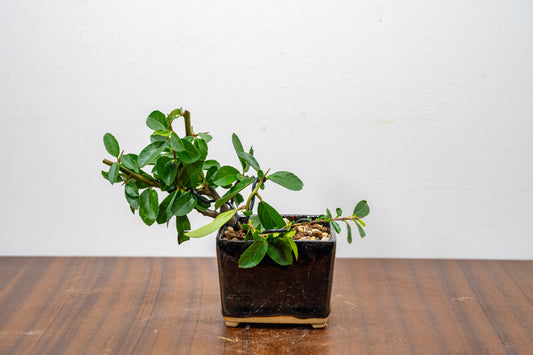Pyracantha, also known as Firethorn, is a popular plant in the UK, commonly cultivated to provide green coverage on walls and other areas. However, Pyracantha can also be grown as bonsai trees, offering a unique and striking addition to any collection. With their year-round broad-leaved foliage, abundant flowering capabilities, and numerous fruit in Autumn, Pyracantha is a favorite among bonsai enthusiasts. The name Firethorn comes from the fiery berry color and the sharp 1" long thorns that adorn all branches. The dark-green leaves, typically around 5 cm, are complemented by white flowers that bloom in mid-Summer, sometimes completely submerging the tree. By August/September, showy spherical berries appear, ranging in colour from yellow to red or orange, depending on the species or variety.
Species Suitable for Bonsai
One of the most commonly used species for bonsai is Pyracantha angustifolia. This variety features orange-yellow berries, although there are now many available varieties with different berry colours. Native to Western China, P. angustifolia is reliably hardy to -2°C when grown in a bonsai container. Another similar species is Pyracantha coccinea, which is more frost hardy and native to Southeast Europe. Like angustifolia varieties, coccinea varieties come in a wide range of berry colours.
Ideal Position and Care
Pyracantha thrives in full sun or partial shade. While P. coccinea varieties are highly frost resistant, some protection may be necessary when temperatures drop below -10°C. Most P. angustifolia varieties are fully hardy to at least -10°C. When it comes to repotting, it is recommended to do so every three to four years as leaf-buds extend. However, Pyracantha can be sensitive to root disturbance, which may affect flower production.
Pruning and Styling Tips
To maintain the desired shape, prune old wood in early Spring or late Summer. After flowering, trim back new growth as needed. On recently repotted or weak trees, removing dead flowers can promote vigor at the expense of berry production. It is also advisable to remove any individual large leaves and spent berries in early Spring. For increased ramification, defoliation can be done by removing all larger leaves in June.
When wiring Pyracantha, caution must be exercised as branches as young as 2 years old can be brittle. While new shoots respond well to wiring, hardened off growth may take longer to set into a new position.
Propagation and Potential Challenges
Pyracantha can be propagated by sowing seeds outside in Autumn or rooting semi-ripe cuttings in Summer. However, it is important to note that frost in late Spring can damage flowers. Additionally, pruning heavily in late Summer and removing flowering spurs should be avoided, as it may result in premature berry-drop. Keeping the tree adequately hydrated during the Summer is crucial to prevent a lack of berries (germination of flowers) caused by dry conditions or rainy spells during flowering.
Versatile Styling Options
Pyracantha is often seen in cascade forms, adding a touch of elegance to any bonsai display. However, it is also suitable for informal upright forms with single or multiple trunks. Whether you have a small or large bonsai collection, Pyracantha can be styled to suit any size.
Pyracantha, with its vibrant foliage, abundant flowers, and striking berries, is a versatile and captivating choice for bonsai enthusiasts. Its adaptability to different styles and sizes makes it a valuable addition to any bonsai collection.
